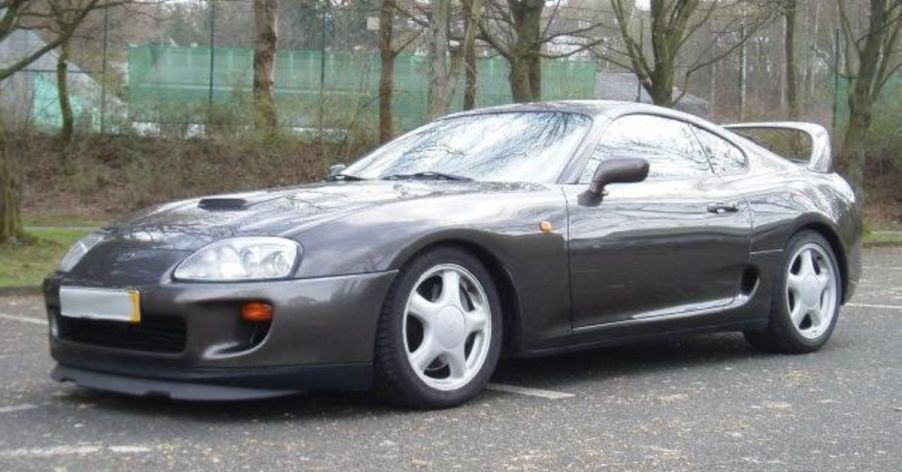
15 Cars That Can’t Be Driven in the USA

Think you can drive any car on US roads as long as you’ve got the keys? Think again! Some cars, no matter how cool, fast, or exotic, just don’t meet the standards for street legality in the USA. Here are 15 cars you might not know are banned from the streets, and the reasons why might surprise you!
1999 Nissan Skyline GT-R R34

This Japanese supercar features impressive performance and a cult following, thanks partly to its appearances in movies like “The Fast and the Furious.” The R34 was never officially sold in the US because it doesn’t meet federal safety and emissions standards. Specifically, it doesn’t comply with the Environmental Protection Agency’s (EPA) regulations.
2003 TVR Tuscan

Imagine a sports car with no airbags, anti-lock brakes, or electronic stability control—that’s the TVR Tuscan for you. This British beauty was never crash-tested or certified for safety compliance in the US. Moreover, TVR’s limited production and financial instability made it impractical for the company to invest in meeting these standards.
Honda S660

The Honda S660 is a pint-sized roadster that brings the spirit of Japan’s kei cars—small, efficient, and surprisingly fun to drive. However, it doesn’t meet US safety and emissions standards. Its tiny engine and lightweight construction are optimized for Japanese regulations, which differ significantly from American requirements.
1992 Mazda Cosmo

The Cosmo was never exported to the US, and its rotary engine doesn’t meet EPA emissions standards. Additionally, it lacks compliance with US safety regulations, including crash testing and airbag requirements. Importing or driving the Cosmo remains banned without official certification or modifications to meet these standards.
Volkswagen Scirocco R

Volkswagen chose not to sell the Scirocco R in the US, primarily to prevent it from cannibalizing sales of the Golf GTI and Golf R. Without the necessary EPA emissions certification and NHTSA safety compliance—including crash tests and airbag standards—the Scirocco R cannot be imported or driven in the US.
Nissan Patrol Y61

The Nissan Patrol Y61 is a workhorse that combines durability with capability. It doesn’t meet US safety regulations, particularly concerning airbags and electronic stability control systems. Additionally, its diesel engines don’t comply with EPA emissions standards. Nissan’s focus on other models like the Armada meant the Patrol remained overseas.
Peugeot 205 GTI

Peugeot exited the American market in 1991, and the 205 GTI was never sold stateside. Like all others on the list, it doesn’t comply with US safety standards, lacking features like reinforced bumpers and airbags. Emissions standards are another hurdle, as the car wasn’t designed to meet EPA regulations.
Lotus Elise Series 1

Introduced in 1996, this car quickly gained a reputation for its exceptional handling and minimalist approach. However, it was considered illicit in the US, primarily due to the absence of airbags and failure to pass crash tests required by the NHTSA. Later versions of the Elise were modified, but the original was not allowed to drive on public roads in America.
Renault Clio V6

The Clio V6 was never sold in the US, as its unique configuration poses challenges for crash safety compliance, and without airbags and other mandated features, it can’t be lawfully imported or driven in the US. It has been described as having “supercar performance in a hatchback body.”
1994 Toyota Supra (Early MKIV Models)

While later models of the MKIV Supra were sold in the US, certain early models with specific modifications or those not originally intended for the US market don’t meet EPA and NHTSA standards. Differences in emissions controls and safety features make these particular Supras unlawful for the American mark
1995 Audi RS2 Avant

The Audi RS2 Avant is a high-performance wagon developed in collaboration with Porsche. However, Audi didn’t certify the car for the American market, and importing one would breach regulations set by the NHTSA and EPA. Here is a fun fact: the RS2 Avant can hit 60 mph in approximately 4.8 seconds, impressive even by today’s standards.
Smart Crossblade

American safety regulations require vehicles to have certain protective features, including windshields and doors. The Crossblade lacks these essentials, and it doesn’t meet crash safety standards. Only about 2,000 units of the Crossblade were produced, and each came with a cover to protect it when parked since it lacks traditional weather protection.
Nissan Silvia S15

The Nissan Silvia S15 is the final iteration of the Silvia line. It was never sold in the US as it lacks the required features like advanced airbags and reinforced impact structures. Without certification, importing and registering an S15 in the US is prohibited until it becomes 25 years old.
Morgan Aero GT

Blending classic British styling with modern performance, the Morgan Aero GT is a limited-production sports car that’s as exclusive as it is distinctive. Morgan’s low production volumes make it impractical to undergo the expensive certification process required for US compliance, keeping this rare gem off American roads.
Toyota Century

Often referred to as the Japanese Rolls-Royce, the Toyota Century is produced exclusively for the Japanese market and doesn’t meet US safety and emissions regulations. Its right-hand-drive configuration and absence of required safety features like advanced airbags make it unlawful to import and drive in the US.


